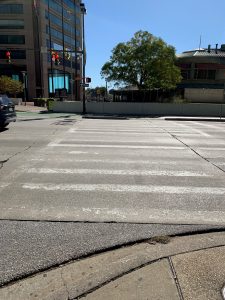On Saturday, the New York Times published an informative article on trucking industry deregulation. If you are a truck accident lawyer in Maryland or elsewhere, I would suggest reading the entire article. Here are some highlights:
*In 1937, Congress set the first driving hour limits. Truckers could drive up to 10 continuous hours but were required to rest for a minimum of 8 hours. They could use the remaining six hours for other work activities, like loading, or for breaks or meals. Truckers could drive up to 60 hours over 7 consecutive days, or 70 hours over 8 days. To enforce those rules, the government required drivers to keep logs.
*In 1999, Congress created the Federal Motor Carrier Safety Administration in response to what lawmakers considered ineffectual regulation and high casualties. A year later, the agency proposed tighter service hour rules. They would allow long-haul drivers to work a maximum of 12 hours a day and require them to take 10-hour breaks between shifts. They also required installation of electronic devices to replace driver logs.
*In April 2003, the Federal Motor Carrier Safety Administration reversed gears and issued rules that increased the maximum driving hours to 77 from 60, over 7 consecutive days, and to 88 hours from 70, over 8 consecutive days. The new rules capped daily work hours at 14, which included driving and waiting for loading and unloading. The Agency also decided not to require truck companies to install electronic monitoring devices.
*During the 2000 election cycle, trucking executives and political action committees gave more than $4.3 million in donations to the Republicans and less than $1 million to Democrats. From 2000 to 2006, the trucking industry directed more than $14 million in campaign contributions to Republicans.
*The trucking industry’s donations and lobbying fees – about $37 million from 2000 to 2005 – led to rules that have saved what industry officials estimate are billions of dollars in expenses linked to tougher trucking regulations.
*The fatality rate for truck-related accidents remains nearly double that involving only cars (according to safety experts).
*The practice of falsifying truck driver hours is an open secret in the trucking industry; truckers routinely refer to their logs as “comic books.” Fines are small and the Federal Motor Carrier Safety Administration does not have enough staff to monitor 700,000 businesses and almost eight million trucks.
The article then tells the story of a truck driver from Virginia who claims to have been taught to conceal excessive driving hours in his truck during his training last January by his former employer, Boyd Brothers Transportation of Birmingham, Alabama. The truck driver said his orientation instructor at Boyd Brothers told his class that government inspectors were allowed to examine a monthly logbook if it was bound, but taught the truck drivers a back door. If they removed the staples, government inspectors considered the trucking log “loose leaf” and they could require an examination of only pages from the most recent seven days.
To keep inspectors off the trail, the truck driver alleged that the drivers were told to use fuel credit cards that recorded only the date, not the time, of the fuel stop. He added that the trucking company he worked for pushed him to work longer hours than permitted and that his logbooks were “adjusted” frequently to appear as if the truck driver was within the legal limits. He said he told a dispatcher several times he was too tired to make another trip, but he was still ordered to do so after just a few hours of sleep. Continue reading





